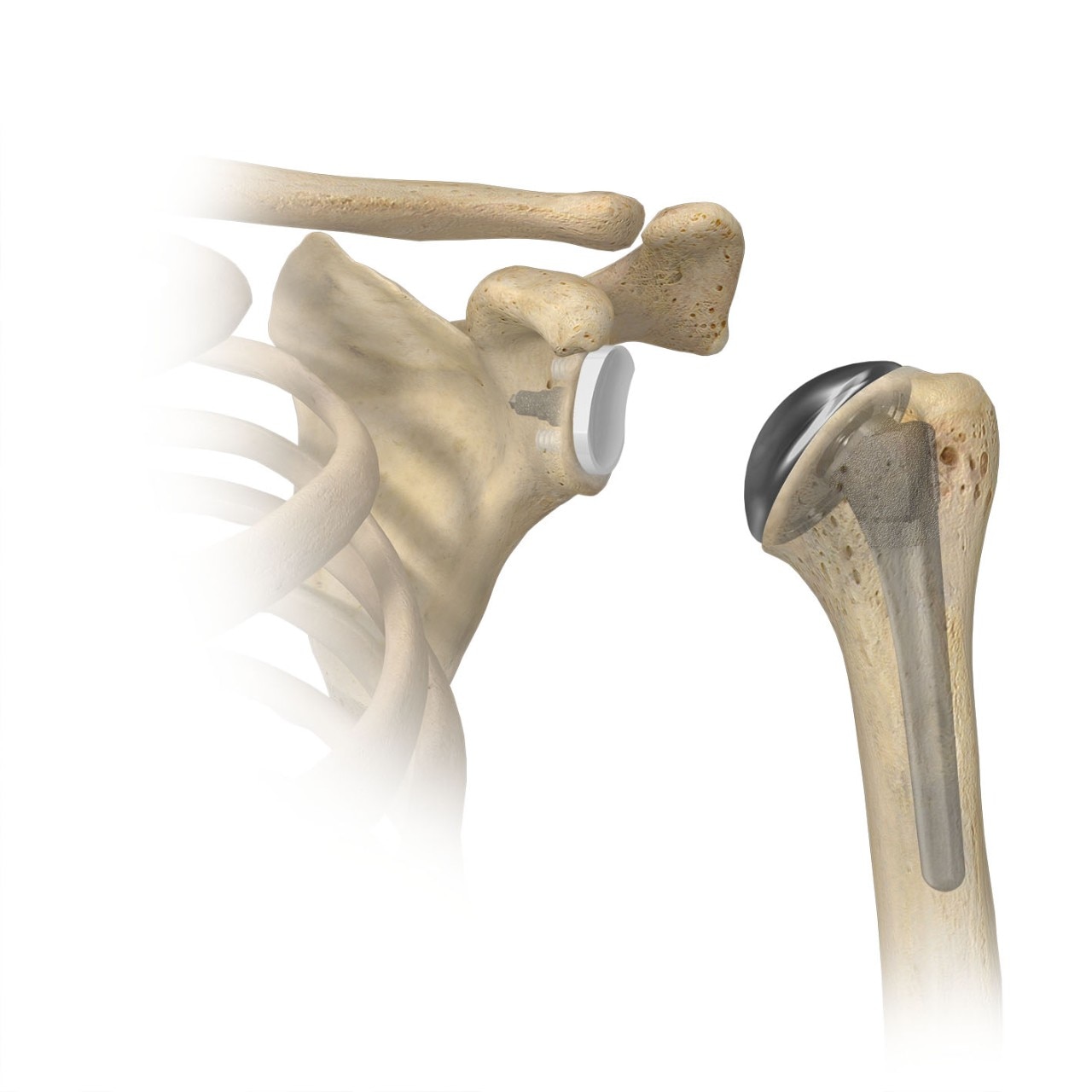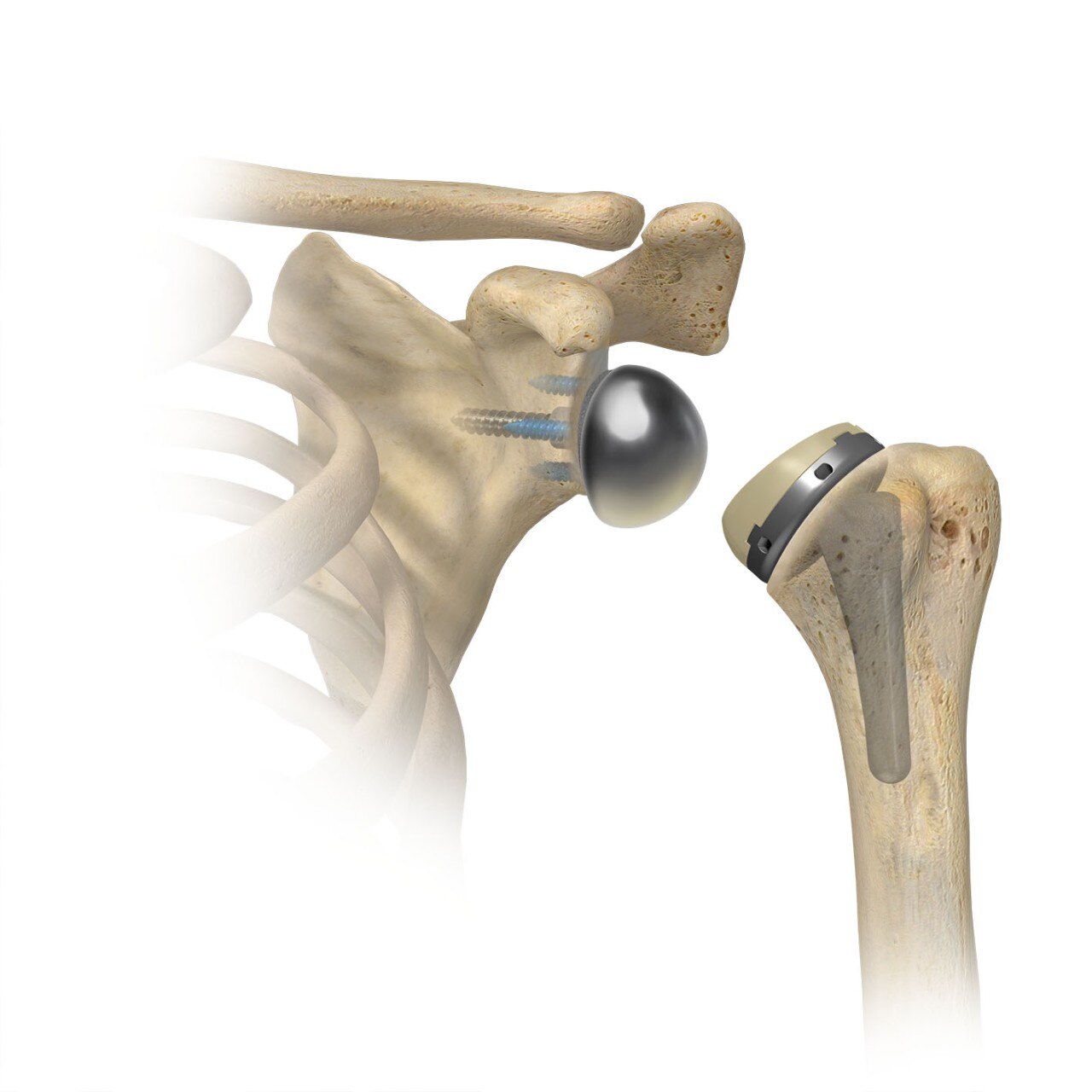The reverse arthroplasty uses the outer muscle of the arm, the deltoid, to compensate for a deficient rotator cuff. Moreover, the more constrained nature of the reverse arthroplasty provides increased stability compared to an anatomic shoulder arthroplasty. The trade-off is that with reverse arthroplasty, there may be less motion particularly with getting the hand behind the back.
With any surgical procedure, there are risks. You can read about some of the associated risks of shoulder replacement by clicking here; but also discuss these, and other, risks with your surgeon.





